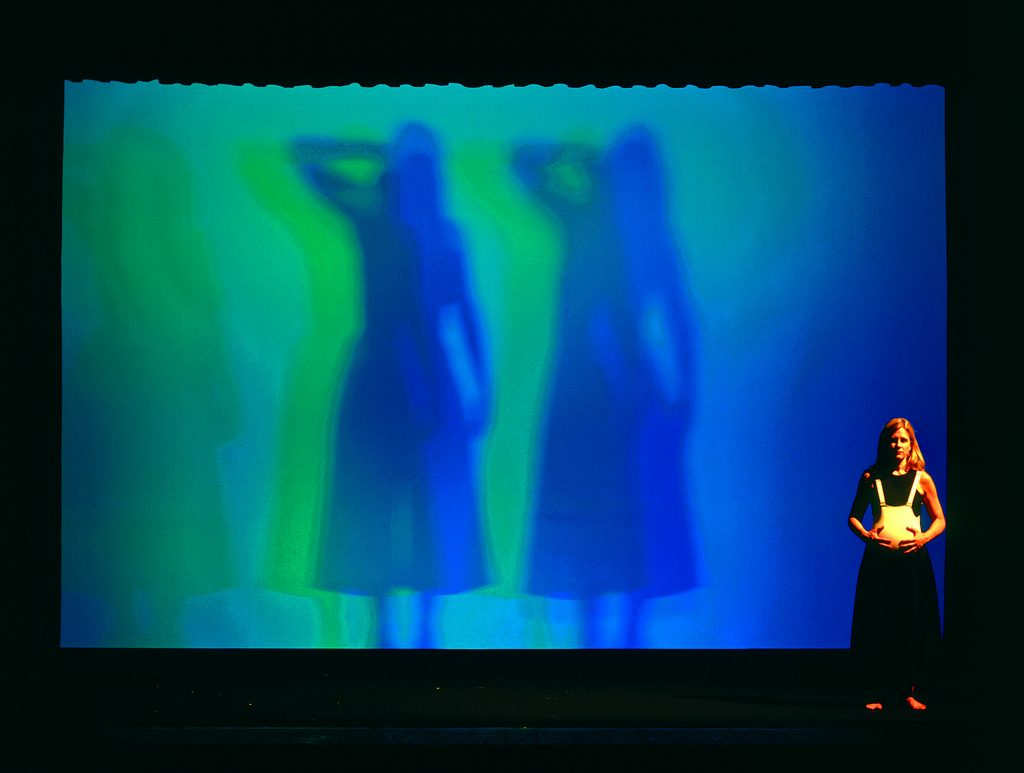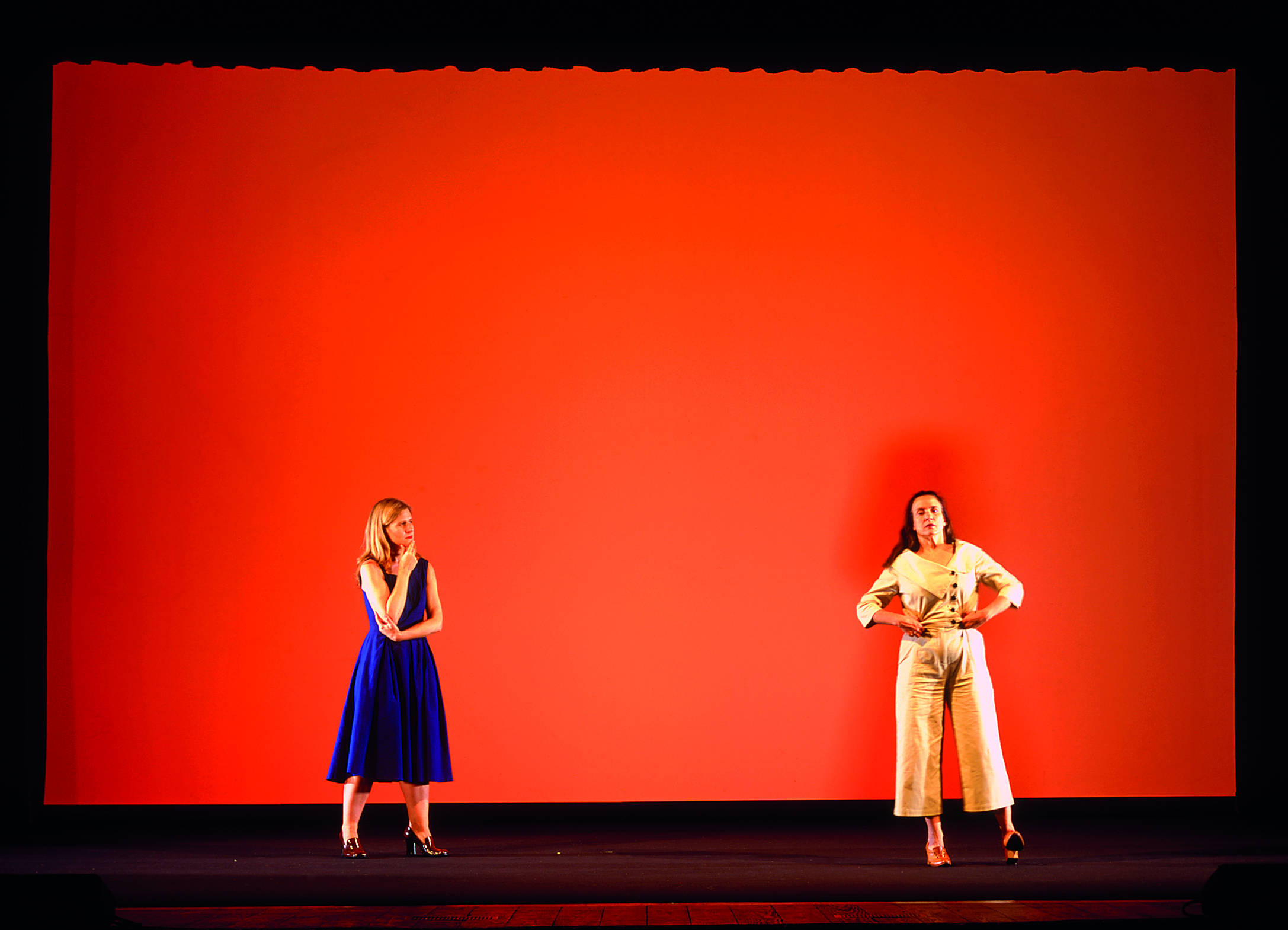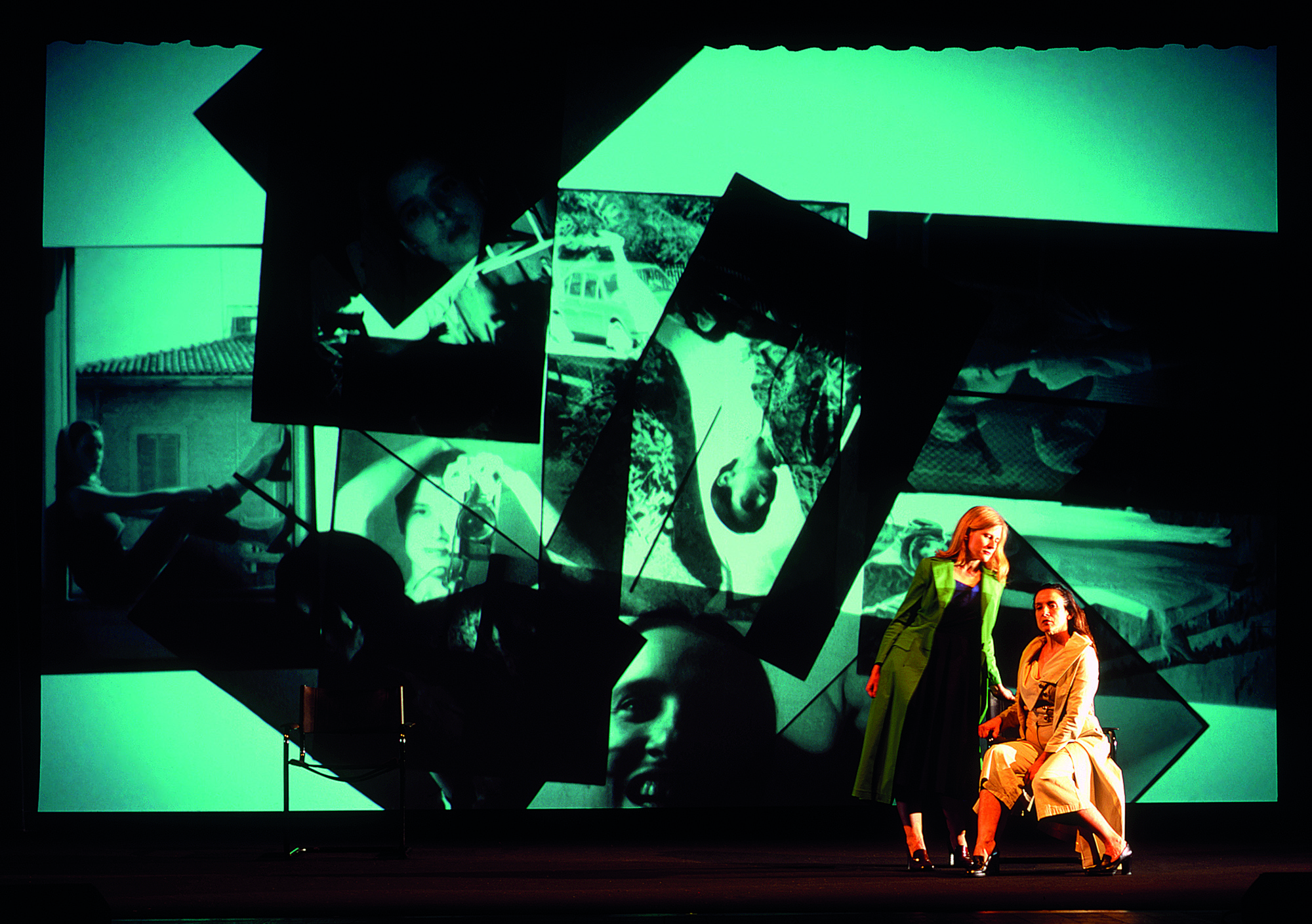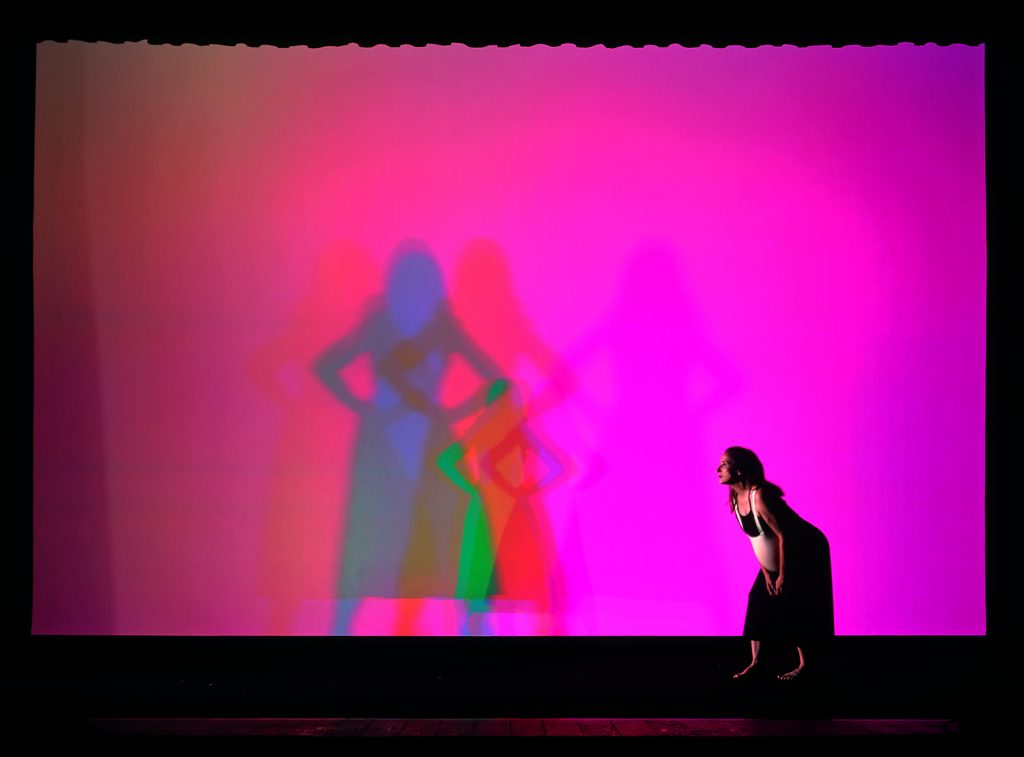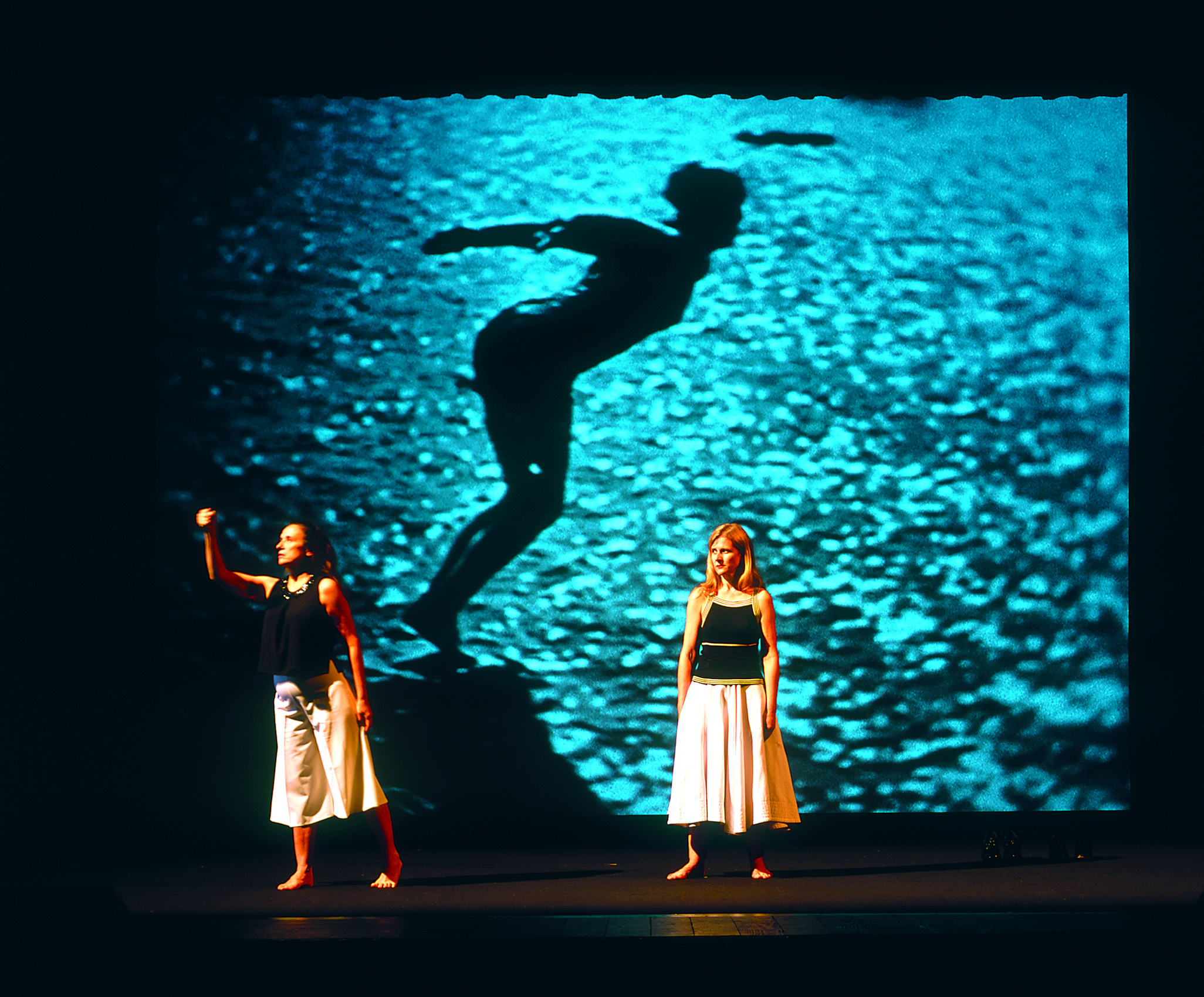Storia di un’amicizia
Excerpt from the tetralogy My Brilliant Friend by Elena Ferrante (Edizioni e/o)
- Concept: Chiara Lagani and Luigi De Angelis
- With: Chiara Lagani and Fiorenza Menni
- Playwriting: Chiara Lagani
- Sound Design: Tempo Reale/Damiano Meacci
- Video: Sara Fgaier
- Lyrics: Emanuele Wiltsch Barberio
- Percussion: Cristiano De Fabritiis
- Choreographic Research and Training: Fiorenza Menni
- Direction, Light Design, Stage Design, Sound
- Project: Luigi De Angelis
- Technical Supervision and Sound Management: Vincenzo Scorza
- Stage Technician: Mirto Baliani
- Video Collaboration: Alessandra Beltrame, Davide Minotti, Stefano P. Testa
- Archival Material: Home Movies Association, National Family Film Archive
- Organization: Maria Donnoli, Marco Molduzzi
- Promotion and Communication: Maria Donnoli
- Co-production: Naples Theatre Festival, Ravenna Festival, E-production
- In collaboration with: Ateliersi
- Special Thanks: Lorenzo Gleijeses, Giorgia Sanguineto, Sofia Di Leva, Andrea Argentieri
- Texts: Elena Ferrante (excerpts from My Brilliant Friend), Chiara Lagani (texts inspired by Frank Lyman Baum, Toti Scialoja, Wisława Szymborska)
Year : 2018
The Performance:
The play explores the enduring friendship between two women, tracing their personal growth, mutual influence, emotions, and the distances and proximities that shape their bond over decades. Against the backdrop of a city-world torn by past, present, and future contradictions, the intertwined stories of the women’s lives reflect the broader historical transformations of their society.
In Ferrante’s tetralogy, My Brilliant Friend retrospectively recounts this friendship. Here, the narrative takes the form of a theatrical story, with Elena Greco (Chiara Lagani) recounting her lifelong connection with Lina Cerullo (Fiorenza Menni), her brilliant friend.
Act 1 focuses on childhood. The two friends, as young girls, throw their dolls into a dark basement as a challenge. When they return, the dolls are gone. Believing Don Achille—the ogre of their childhood—stole them, they summon the courage to confront him. The actresses embody Ferrante’s text, merging the personas of child, woman, and doll in a hybrid identity.
Act 2 covers adulthood. Lila marries, adopting a new surname and leaving behind a phase of her life. The Solara brothers, powerful figures in their neighborhood, want to use an image of Lila in her wedding dress for their shoe store’s advertising. Lila, trying to reclaim control over her image and life, agrees, but only if she can alter it. This symbolic act marks the beginning of this act, reflecting their friendship’s evolving narrative.
Act 3 explores motherhood. Elena, now married with two daughters, has distanced herself from Lila and their neighborhood. Meanwhile, Lila’s tumultuous marriage ends, and she starts a life with Enzo, her former schoolmate. Both women experience parallel pregnancies—Elena’s with Nino, Lila’s with Enzo. This rekindles their bond as their daughters, Tina (Lila’s) and Imma (Elena’s), grow up together, mirroring their mothers’ troubled friendship. However, tragedy strikes when Tina suddenly disappears…\
TOUR
June 22-23, 2018 | Naples, Teatro Politeama
July 5, 2018 | Ravenna, Teatro Alighieri
August 29, 2018 | Bassano del Grappa, Teatro Remondini
October 26-28, 2018 | Milan, Teatro Franco Parenti
November 3, 2018 | Riccione, Spazio Tondelli
January 30, 2019 | Trento, Teatro Sociale
February 16, 2019 | Ravenna, Teatro Rasi
February 21, 23, 24, 2019 | Rome, Teatro Villa Torlonia
March 16-17, 2019 | Modena, Teatro delle Passioni
October 2-3, 2019 | São Paulo, Brazil, Sesc Pompeia
December 17, 2019 | Como, Teatro Sociale
January 25, 2020 | Casalecchio di Reno (BO), Teatro Comunale Laura Betti
February 8, 2020 | Rimini, Teatro degli Atti
February 15, 2020 | Casalmaggiore (CR), Teatro Comunale
March 8, 2022 | Milan, Teatro Carcano
March 26-27, 2022 | Bologna, Teatro Arena del Sole
January 12-13, 2023 | Rovereto, Teatro Zandonai
January 26-28, 2023 | Turin, Teatro Astra
March 11, 2023 | Parma, Teatro al Parco
ph, Enrico Fedrigoli
PRESS REVIEW
Storia di un’amicizia by Laura Bevione | Dramma.it, January 28, 2023
Drawing from the four-book series that began with the remarkable success of My Brilliant Friend, Chiara Lagani crafts a script divided into three parts. This adaptation is not merely a condensed version of Elena Ferrante’s tetralogy but a personal and faithful exploration of particularly resonant moments—both individually and collectively. The play’s prologue mirrors the first novel, setting the stage for a narrative unfolding in a long flashback punctuated by ellipses that maintain coherence and comprehensibility.
The first part centers on the protagonists’ childhood—Lenù (Lagani) and Lila (Menni)—especially focusing on the episode with their dolls, uncanny doubles symbolizing their bond. This motif recurs throughout the performance, which expands in scope during the second part. Initially, the actors perform almost in the foreground, dressed in white and facing the audience in a darkened space. Later, the stage opens to reveal a backdrop projecting archival footage from the Home Movies Association’s National Family Film Archive.
The narrative broadens here, moving from the claustrophobic basement where the dolls were thrown—and, more broadly, from a stifling Neapolitan childhood—to adolescence and life beyond the maternal sphere. Lila’s youthful marriage contrasts with Lenù’s academic pursuits, illustrated by a photograph of Lila displayed in a shoe store under a unique condition.
The third part marks another significant time leap: both friends are now women who have changed partners and become mothers. They are both pregnant again, symbolized by the actors’ visibly exaggerated bellies. Each gives birth to a daughter, but the children’s fates diverge dramatically. This doesn’t sever the bond formed in their childhood, despite the challenges.
Each act reflects stages in the protagonists’ lives, portraying their complex yet steadfast personalities. The play remains true to the original narrative’s essence while transforming the written word into a dynamic theatrical experience. It harmonizes dialogues, descriptions, monologues, and transitions with meticulous gestures.
Unlike the television adaptation, this is not a simple transposition of Ferrante’s tetralogy but an original theatrical variation on its themes—especially the struggle for self-determination. It draws deeply from the novels, using them as fertile ground for creative interpretation.
